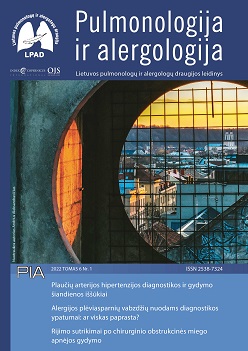EFFECT OF DUAL BRONCHODILATOR THERAPY ON RESPIRATORY AND CARDIOVASCULAR PARAMETERS, EXERCISE ENDURANCE AND CARDIOVASCULAR SAFETY IN PEOPLE WITH CHRONIC OBSTRUCTIVE PULMONARY DISEASE
Abstract
Chronic obstructive pulmonary disease (COPD) is a progressive and potentially fatal disease that significantly impacts a patient’s daily life. COPD diagnosis is often late and might be accompanied by severe symptoms. In this case, the combination of a long-acting muscarinic antagonist (LAMA) and long-acting beta-agonist (LABA) should be considered as an option for the initial treatment. It is known that dual bronchodilator therapy significantly improves lung function and exercise endurance. Moreover, some authors have announced that it may also have a positive effect on the cardiac function when using cardiac magnetic resonance imaging or two–dimensional cardioechoscopy for the assessments. Recently, close attention has been paid to evaluating the cardiovascular safety of COPD treatment with combinations of LAMA / LABAs. However, the cardiovascular safety profile still remains an object for discussion. This review provides the summarized data from the scientific publications on the impact of dual bronchodilator therapy in terms of respiratory and cardiovascular systems, as well as exercise endurance.


